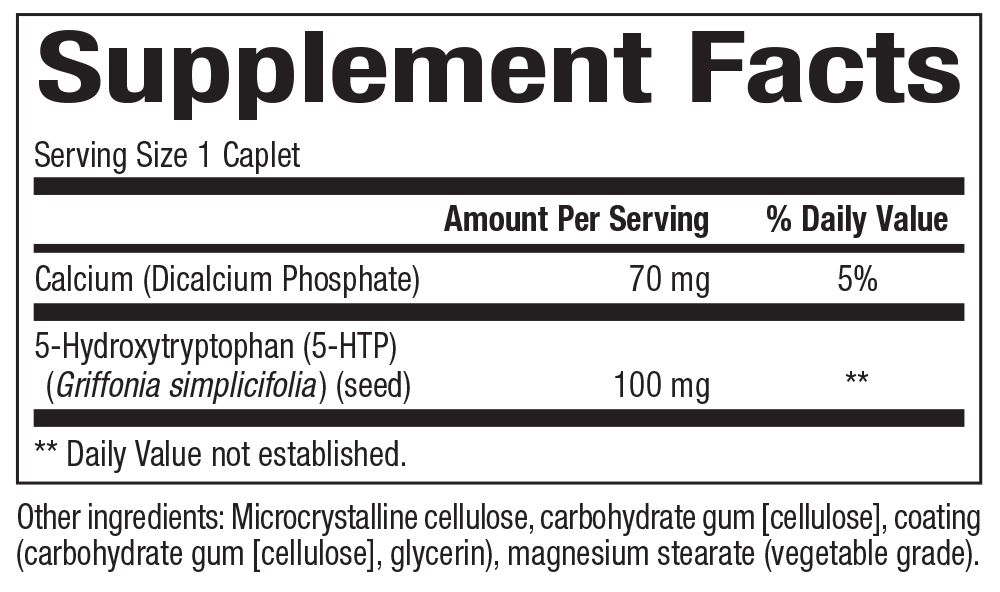
Healthy Mood Support*
100 mg
60 Timed-release Caplets ( SKU: 9289U )
Supplement Facts:

Dosage:
Healthy Mood: 1 caplet, 1–2 times per day or as directed by a health care professional.
Sleep Aid: 1 caple,t 1–2 times per day, 30–45 minutes before bedtime, or as directed by a health care professional.
To minimize the risk of gastrointestinal side effects, slowly increase dose over a period of 2 weeks.
Warnings:
Consult your health care professional prior to use if you are pregnant, trying to become pregnant, breastfeeding, taking medication, or supplements with serotonergic activity (specifically those with SSRIs, MOAs, or depressant/sedative affect) have a medical condition, or anticipate surgery. Keep out of reach of children.
Allergens:
Contains no artificial colors, preservatives, or sweeteners; no dairy, starch, sugar, wheat, gluten, yeast, soy, corn, egg, fish, shellfish, animal products, salt, tree nuts, or GMOs. Suitable for vegetarians/vegans.
